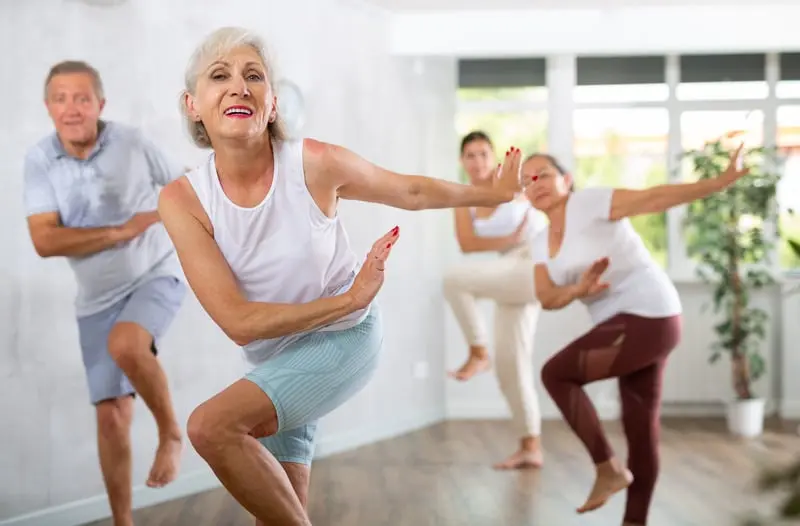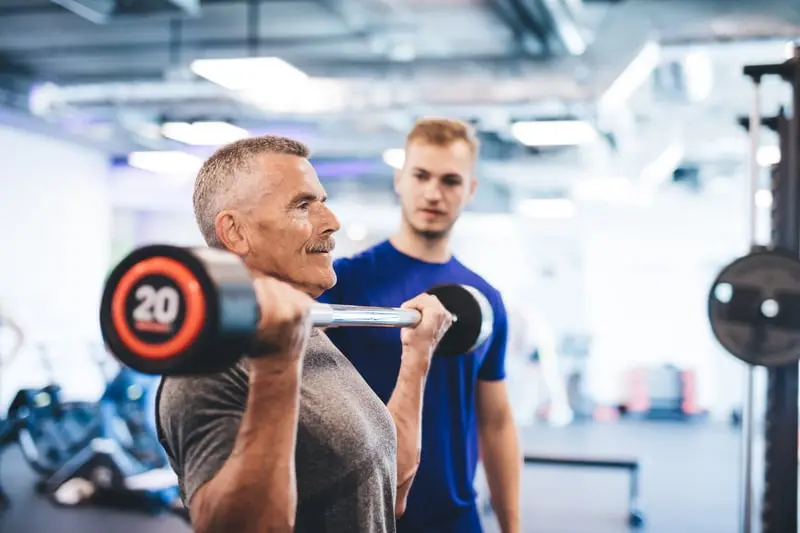
Navigate and Thrive with Parkinson’s
Welcome to your starter kit. This journey brings many questions, and we’re here to help you navigate it. From work and lifestyle to home safety and family conversations, you’ll find resources and expert insights to guide you through the next steps with confidence.
Step Into Action
The PD journey is never navigated alone. We understand that care partners are essential participants and need guidance and support too.
Step One: Understanding Parkinson's
Key insights to help care partners understand Parkinson’s—from symptoms and treatments to navigating medical care and shifting relationships—so you can support your loved one with confidence.
5 Honest Reactions to a Parkinson’s Diagnosis
This article outlines five common and honest reactions people have after receiving the life-changing news that they now must adapt to a new life with PD.
Exercise and Parkinson's Video
Regular exercise is important for anyone and may be especially important for people with Parkinson’s. This video discusses the benefits of physical activity, gives tips on
starting and maintaining a workout regimen, and covers the latest research on
exercise’s effect on PD.
Step Two: Wellness
Guidance for care partners on managing stress, building healthy routines, setting boundaries, and knowing when to seek support for lasting well-being.
Building Well-Being Practices into Everyday Life with Parkinson’s
Parkinson’s disease (PD) affects everyone differently and changes over time.
Symptoms can be hard to predict and may fluctuate depending on factors like
medication, stress and sleep. The pressure to adapt to changing physical abilities, as
well as mood symptoms, such as depression, anxiety and apathy, may be
overwhelming at times and lead to feelings of hopelessness. Learn everyday strategies that may help well-being and mood.
Step Three: Daily Care & Home Life
Practical tips on supporting daily activities, creating a safe and accessible home, managing medications and appointments, and finding routines that work for everyone.
[Watch] Nutrition and Parkinson’s with Kristin Gustashaw
In this Live Well Today webinar, Davis Phinney Foundation Executive Director Polly
Dawkins talks with Kristin Gustashaw, a registered dietician at Rush University Medical Center, about nutrition and Parkinson’s. They discuss general dietary guidance for people with Parkinson’s, the effects of alcohol, dairy and fiber, and a new perspective on protein-levodopa interactions.
Step Four: Support System & Connection
Guidance on maintaining strong relationships, navigating tough conversations, building your support network, and finding help when you need it most.
PWF Support Group (Coming Soon!)
More information is coming soon
Step Five: Tools & Resources
Access educational tools, resources, and workshops to help you adapt and stay prepared through every stage. Get guidance on legal, financial, and care planning.
[Order a Copy] Davis Phinney Every Victory Counts® Manual for Care Partners
The Every Victory Counts® Manual for Care Partners from the Davis Phinney Foundation is a trusted resource filled with FAQs, expert guidance, and stories from fellow care partners. Designed to support you on your Parkinson’s care journey—order your own copy today!
[Download] Care Partner Worksheets from Parkinson's Foundation
Parkinson’s Foundation Care Partner worksheets will allow you to get organized and help with your own wellness so that you may best care for your PD partner.
Step Seven: Community Inspiration
Real stories, helpful tips, and heartfelt encouragement from care partners to uplift and inspire you on your journey.
PWF's My Story Feature: Sharing the Strength of Our Community
Our “My Story” series will highlight the voices and experiences of individuals living with Parkinson’s. These personal stories, shared in written or video format, will celebrate the resilience and strength of our community.
Parkinson’s 101
We Answer Your Top Parkinson’s Questions
What is Parkinson’s?
Parkinson’s disease is a progressive neurodegenerative disorder characterized by a loss of dopamine producing cells in the brain. It primarily affects older adults with men at a higher risk than females, but is also found in younger adults. Movement is primarily affected and may include symptoms such as tremors, stiffness, slowness of movement and difficulty with gait and balance. Other symptoms vary and may include gastrointestinal symptoms, changes in sense of smell, sleep disturbances, behavior changes, depression, and challenges with cognition.
What is the cause of Parkinson’s?
The exact cause of Parkinson’s disease is still unknown. Researchers believe it is likely due to a combination of genetic and environmental factors. Some people may have a family history of Parkinson’s, but for many, there is no definitive genetic link. Certain environmental exposures, like toxins, might increase the risk, but it’s important to know that Parkinson’s is complex, and no single cause has been identified.
What are the early signs of Parkinson’s?
Diagnosing Parkinson’s involves a careful assessment by a neurologist, often specializing in movement disorders. There isn’t a single test for Parkinson’s; instead, the diagnosis is based on medical history, a review of symptoms and a neurological examination. In some cases, imaging tests may be used to rule out other conditions. Early diagnosis is important so that symptoms can be managed as soon as possible.
What are the stages of Parkinson’s?
Parkinson’s disease is typically divided into five stages, each reflecting the progression of symptoms.
- Stage 1: Mild symptoms on one side of the body that don’t interfere much with daily life, such as a slight tremor or changes in posture.
- Stage 2: Symptoms become more noticeable, with symptoms on both sides of the body, but daily activities can still be managed.
- Stage 3: Balance issues and slower movements appear, increasing the risk of falls. Daily tasks become more challenging.
- Stage 4: Symptoms become more severe, requiring assistance with daily activities. Walking and movement are significantly impaired.
- Stage 5: The most advanced stage, where symptoms are severe, and the person may need full-time care. Mobility is often limited, and a wheelchair may be necessary.
What treatment options are available for Parkinson’s?
While there is no cure for Parkinson’s, there are many treatments available to help manage the disorder. Medications, such as levodopa, can help control symptoms, especially those affecting movement. Physical therapy, occupational therapy and speech therapy are also important for maintaining mobility and function. In some cases, surgical options like deep brain stimulation may be recommended. Staying active, maintaining a healthy diet and staying engaged in activities and in your community make a big difference.
What are some common myths or misconceptions about Parkinson’s?
There are several misconceptions about Parkinson’s disease. One common myth is that the disorder only affects older people, but Parkinson’s can affect adults of any age. Another misconception is that tremors are the only symptom, while in reality, Parkinson’s can also cause stiffness, balance issues, swallowing and voice concerns, and changes in mood and cognition. Lastly, it’s often believed that Parkinson’s is fatal; however, while it’s a serious condition, it’s not usually the direct cause of death. Many people with Parkinson’s live long, fulfilling lives with the right treatment and support.
You Took the First Step—Now It’s Time to Move!
We believe that exercise is one of the most powerful tools for living well with Parkinson’s. As our co-founder shares, “Exercise has proven to be one of the most effective means of slowing the progression of PD. For me, a mix of boxing, core, and balance work has been the most effective—and consistency, five days a week, has made a real difference.” Everyone’s needs are different, and finding the right routine comes down to personal interests, goals, and energy levels.
Explore below to see why exercise helps, what works for you, and how to begin safely.
Benefits of Exercise for PD
Regular exercise is one of the most powerful tools for managing Parkinson’s. Research shows it can improve balance, flexibility, posture, and overall mobility. It can also slow the progression of motor symptoms, reduce stiffness, and help with mood and cognition. Beyond the physical benefits, exercise offers a sense of empowerment and control over your health and well-being.
Finding the Right Exercise Routine
There’s no one-size-fits-all approach. The best routine is one you enjoy and can stick with consistently. Whether it’s boxing, walking, cycling, dancing, strength training, yoga, or cardio-based workouts, variety is key. A balanced mix of aerobic (cardio), strength, flexibility, and balance training is recommended. You can explore programs tailored specifically for Parkinson’s or modify existing classes with guidance from trained instructors.
Starting Exercise Safely
Before beginning any new fitness program, consult with your doctor or a physical therapist familiar with Parkinson’s. Start slow, listen to your body, and focus on proper form over intensity. At the Parkinson’s Wellness Foundation, we offer Parkinson’s-specific classes led by trained professionals who understand your unique needs. Whether you’re trying our signature classes or Dance for PD, our programs are designed to help you move confidently and safely. You don’t have to do it alone—our team is here to support you every step of the way.










